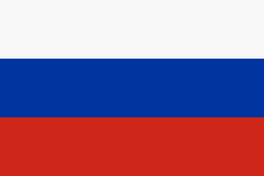Donate to Support Supercluster
Your support makes the Astronaut Database and Launch Tracker possible, and keeps all Supercluster content free.
SUPPORTSupercluster on Patreon
Your support makes the Astronaut Database and Launch Tracker possible, and keeps all Supercluster content free.
SUPPORTThis goes
to space
Neitron
Neitron is a Russian military reconnaissance satellite designed by NPO Mashinostroyeniya. It is designed to carry out optical reconnaissance on the ground and also to take photos of payloads in orbit.
On this
rocket
Soyuz 2.1a/Fregat
The Soyuz 2.1a/Fregat-M rocket as it is known to Roscosmos, the Russian federal space agency, is also called the Soyuz ST-A when used by Arianespace for European launches.
It is built by the Progress Rocket Space Centre (TsSKB-Progress) under the jurisdiction of Roscosmos.
The Soyuz 2.1a/Fregat-M provides medium-lift capability.
It can be launched from all three Roscosmos launch sites: the Baikonur Cosmodrome in Kazakhstan, the Plesetsk Cosmodrome in western Russia, and the Vostochny Cosmodrome in eastern Russia.
For Arianespace, it is primarily launched from Guiana Space Centre in South America, making it the only -- at present -- rocket to launch from more than one continent.
Image credit: CC "Yuzhny" / TSENKI / Roscosmos
From this
launch site
Site No. 43/4 - Plesetsk Cosmodrome, Russian Federation
The Plesetsk Cosmodrome is located 800 km north of Moscow, Russian Federation.
The site was founded in 1957 to support Union of Soviet Socialist Republics ICBM launches of the R7 missile - from which the Soyuz rockets today are derived.
Site 43 consists of two major launch pads. 43/3 and 43/4. Both of which are active today with over 200 and 300 launches respectively.
Plesetsk was not as busy as Baikonur in terms of satellite launches from its founding in 1957 to 2000 due to its location and ability to only launch crafts to Molniya and polar orbits.
With the fall of the Soviet Union and the Baikonur Cosmodrome becoming foreign territory for Russia, Plesetsk has been far more active since the 2000s.
It is primarily used for military and commercial launches to high inclination and polar orbits.
It has been the site of three fatal ground accidents that have killed 58 people.
In 1973, a Cosmos-3M rocket exploded on the launch pad killing 9; in 1980, a Vostok-2M rocket exploded during fueling, killing 48; in 2002, a Soyuz-U rocket exploded killing 1 person.
Here's where to view Neitron #2
GET THE SUPERCLUSTER APP
THE SUPERCLUSTER PODCAST
A podcast exploring the amazing milestones that changed space history, the wildest ideas that drive our future, and every development in this new Golden Age of Space.
Donate to support
Your support makes the Astronaut Database and Launch Tracker possible, and keeps all Supercluster content free.
SupportCOPYRIGHT 2021 SUPERCLUSTER LLC

